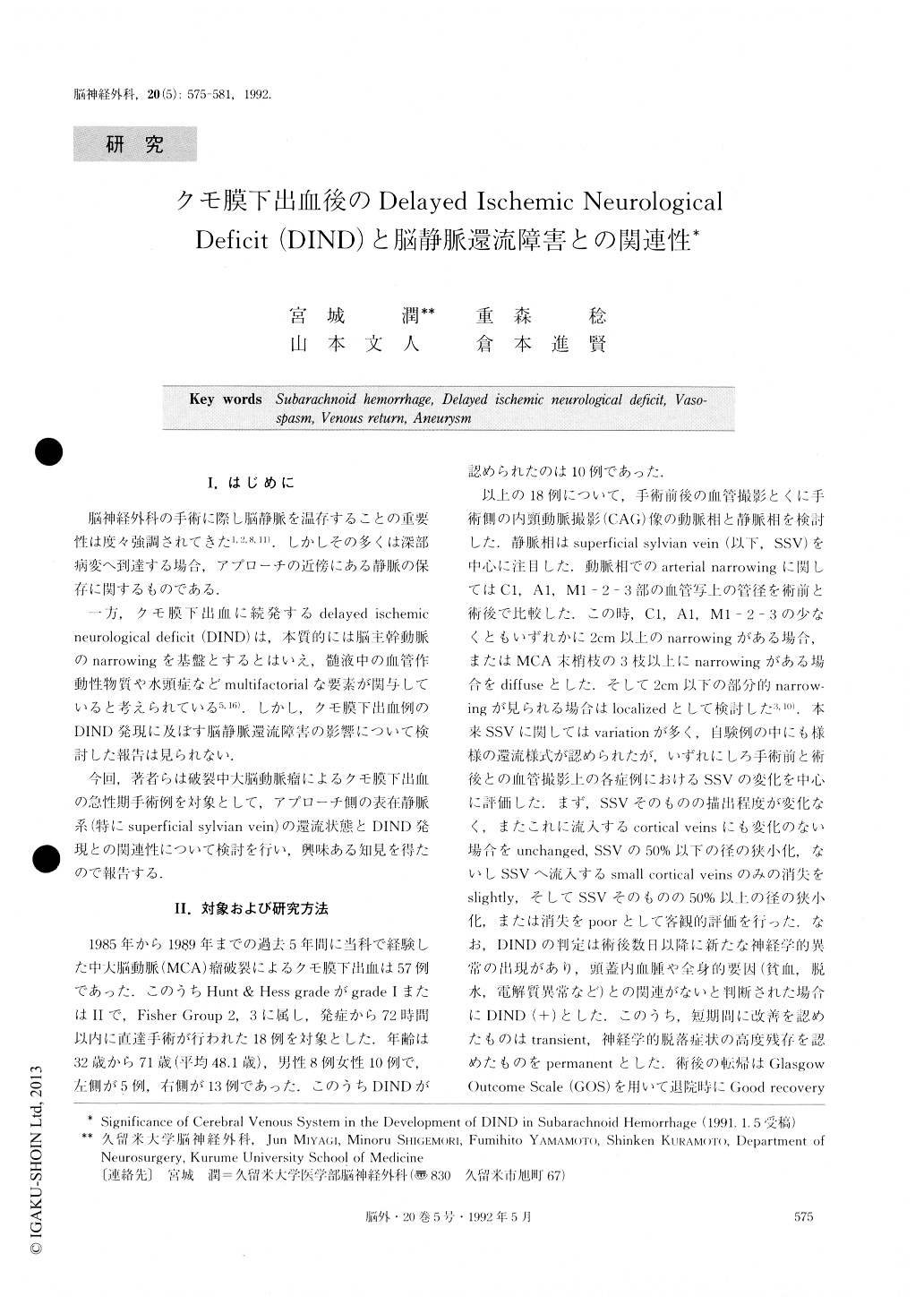Japanese
English
- 有料閲覧
- Abstract 文献概要
- 1ページ目 Look Inside
I.はじめに
脳神経外科の弄術に際し脳静脈を温存することの重要性は度々強調されてきた1,2,8,11).しかしその多くは深部病変へ到達する場合,アプローチの近傍にある静脈の保存に関するものである.
一方,クモ膜下出血に続発するdelayed ischemicneurological deficit(DIND)は,本質的には脳主幹動脈のnarrowingを基盤とするとはいえ,髄液中の血管作動性物質や水頭症などmultifactorialな要素が関与していると考えられている5,16).しかし,クモ膜下出血例のDIND発現に及ぼす脳静脈還流障害の影響について検討した報告は見られない.
今回,著者らは破裂中大脳動脈瘤によるクモ膜下出血の急性期手術例を対象として,アプローチ側の表在静脈系(特にsulperficial sylvian vein)の還流状態とDIND発現との関連性について検討を行い,興味ある知見を得たので報告する.
Abstract
The significance of superficial venous system in the development of delayed ischemic neurological deficit (DIND) was studied retrospectively in 18 patients with ruptured aneurysm of the middle cerebral artery (MCA) . Neck clipping of the aneurysms was per-formed via the pterional approach within 72 hours after onset of subarachnoid hemorrhage. All patients were in grade I or II of the Hunt and Hess Grading, and in group 2 or 3 on Fisher's CT classification. The age ranged from 32 to 71 with 48.1% being the mean age.The aneurysm was located on the left side in 5 patients, and on the right side in 13 patients. Arterial and vemms phase were evaluated on the pre-and post operative anglograms in these patients.
Arterial narrowing was divided into localized and dif-fuse types according to the degree, and its distribution in the arterial tree. In the venogram, °pacification of the superficial sylvian veins (SSV) was the main thing evaluated.
Arterial narrowing was observed in 16 cases (9 ; localized, 7 ; diffuse) . In some cases, visualization of the SSV was poor or fair, and in others it was normal. DIND, including motor deficit or disturbance of con-sciousness, developed in 10 cases (transient ; 6, permanent ; 4).
The patients with normal visualization of SSV on the postoperative angiogram had go al outcome, even if they had diffuse arterial narrowing. On the other hand,he outcome was only fair or poor in those patientswho had poor visualization of the SSV, irrespective ofarterial narrowing.
It is unknown whether poor opacification of SSV isan etiological factor of DND or not, but this phe-nomenon seems to be closely related to the develop-ment of DIND in patients with ruptured MCAaneurysms.
Preservation of the superflcial venous drainage wastherefore an essential Point during operations on thesepatients.

Copyright © 1992, Igaku-Shoin Ltd. All rights reserved.


